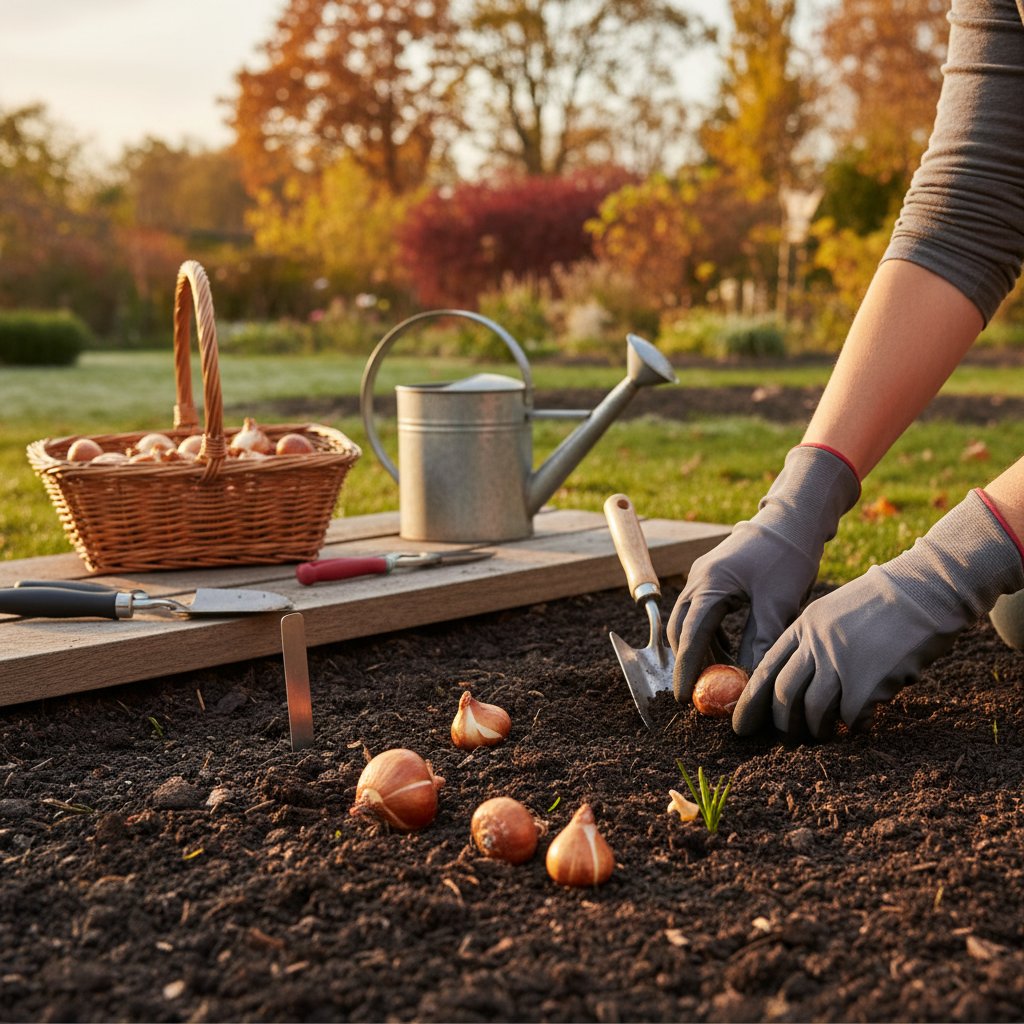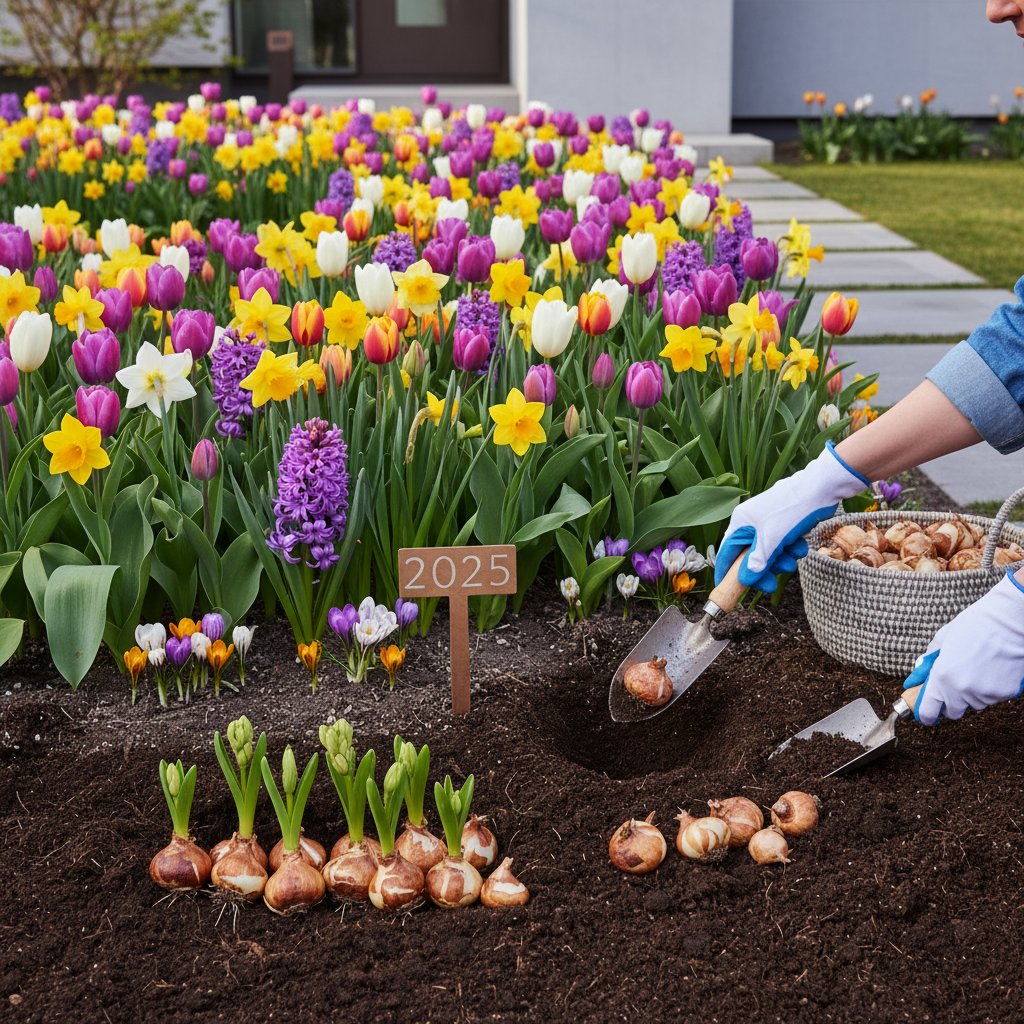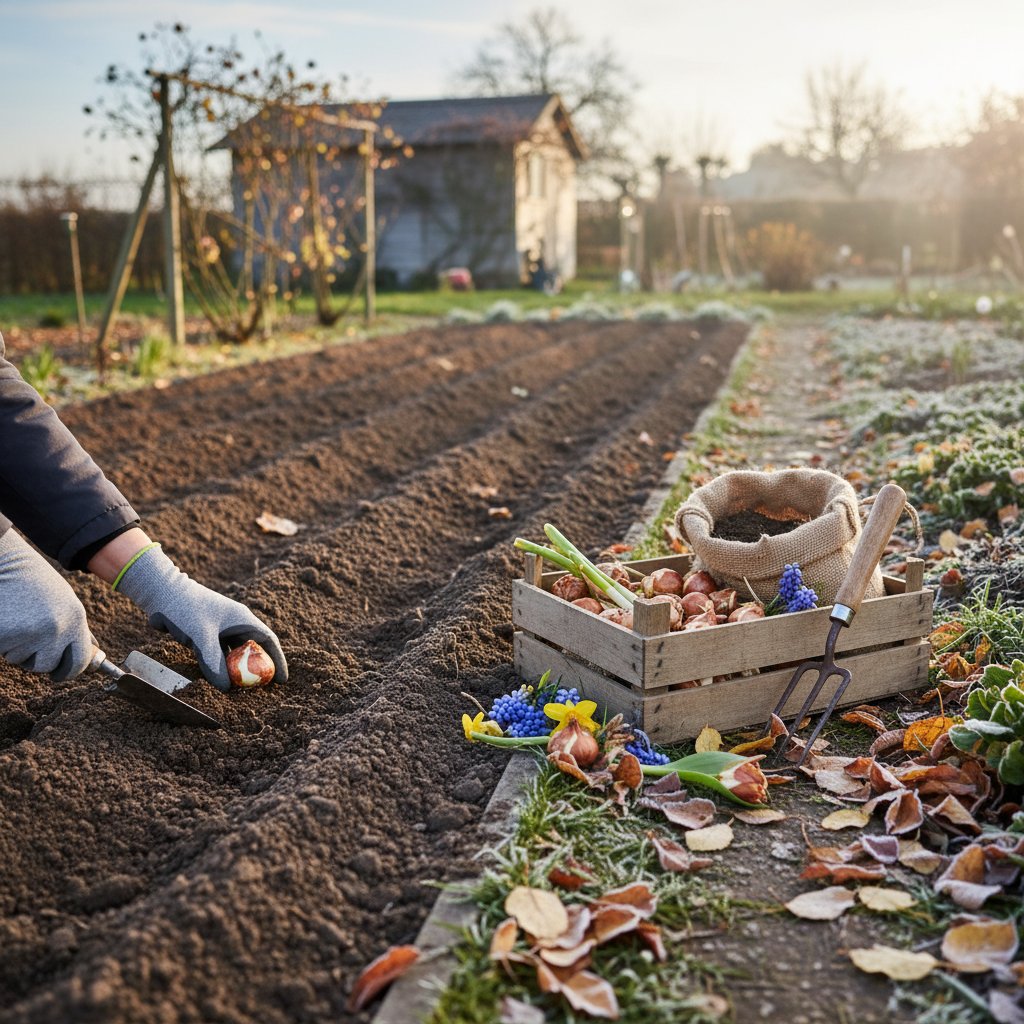Optimal Fall Timing for Spring 2025 Blooms
Fall emerges as a serene phase in the garden cycle, following the vibrancy of summer. This period allows gardeners to initiate preparations that yield impressive spring results. Planting bulbs during this season embeds the potential for renewal, as they establish roots beneath the soil through winter's chill.
Those who have observed tulips, daffodils, or crocuses emerging amid melting snow appreciate the outcomes of strategic fall planting. Precise timing determines whether the display appears sparse or abundant. Gardeners benefit from mastering the essentials of bulb planting to achieve reliable, striking results.
The Importance of Fall for Spring-Flowering Bulbs
Spring bulbs require an extended cool period to develop robust roots before blooming. Winter's cold serves as a vital cue, prompting the bulbs to enter dormancy. Planting too early risks premature sprouting, exposing shoots to frost damage. Delaying until after the ground freezes hinders root establishment in firm soil.
Aim to plant when soil temperatures reach 50 to 60 degrees Fahrenheit, typically six to eight weeks before the average first frost. This window ensures the soil cools sufficiently without hardening. Test readiness by digging a small hole; the earth should yield easily and feel cool to the touch.
Selecting Bulbs to Suit Your Garden Design
Bulbs integrate seamlessly into diverse landscapes, enhancing both formal and informal settings. Consider the garden's layout and desired aesthetic when choosing varieties. Strategic placement amplifies visual impact and extends the blooming season.
- Tulips provide bold colors and structured elegance, ideal for borders along pathways or formal beds near entrances.
- Daffodils offer resilience and bright cheer, suiting naturalized meadows or mixed perennial borders; they perennialize well and deter pests like deer.
- Crocuses and snowdrops deliver early color, blooming even under light snow; position them along walkways or beneath trees that lose leaves in fall.
- Hyacinths contribute intoxicating fragrance alongside vivid hues, best near seating areas or windows to allow scents to permeate living spaces.
Combine species by considering bloom sequences, heights, and palettes. Plant early bloomers like crocuses at 2 to 3 inches deep, mid-season tulips at 6 to 8 inches, and late daffodils at 6 inches. Repeating motifs in color or form maintains harmony across the planting.
Essential Soil Preparation Steps
Effective soil preparation prevents common failures like rot or poor emergence. Bulbs thrive in loose, well-draining soil with a pH between 6.0 and 7.0. Amend heavy clay soils by incorporating 2 to 3 inches of compost or coarse sand per square foot to enhance aeration and drainage.
Opt for raised beds or sloped sites in areas prone to standing water. Dig holes to the recommended depth: three times the bulb's height for most types. Orient the bulb point upward, space them 3 to 6 inches apart depending on size, and backfill with soil, firming gently to eliminate voids.
Irrigate deeply immediately after planting to initiate rooting, using about 1 inch of water. Subsequent moisture comes from natural precipitation; avoid overwatering to prevent sogginess.
Adjusting Timing for Regional Climates
Climate zones dictate variations in planting schedules. In USDA zones 3 to 5, begin in September to allow rooting before deep freezes. Zones 6 to 8 permit October planting, while zone 9 gardeners may extend into November.
Monitor local weather patterns: proceed when daytime highs average 60 degrees Fahrenheit and nights drop below 50 degrees. For uncertain conditions, plant a trial group of 10 to 20 bulbs and evaluate spring performance to refine future efforts.
Regional differences also influence variety selection; choose cold-hardy types like species tulips for northern areas or heat-tolerant alliums for southern gardens.
Post-Planting Maintenance Practices
Apply a 2-inch layer of organic mulch, such as chopped leaves or pine needles, over the planted area. This moderates temperature fluctuations and suppresses weeds without smothering the soil. Refresh mulch annually if it decomposes.
Leave the site undisturbed through winter, as bulbs form roots and bulbs in the cold depths. In spring, clear mulch when shoots reach 2 inches to facilitate growth. Fertilize lightly with a 10-10-10 formula in early spring to support foliage development.
Observe the progression of blooms: crocuses in March, tulips in April, and daffodils into May. Allow leaves to yellow naturally post-bloom to nourish next year's bulbs.
Resolving Typical Bulb Planting Challenges
Bulbs occasionally underperform despite careful planning. Identify issues through observation and implement targeted fixes.
- Inadequate drainage: Rot occurs in wet soils; test by filling a hole with water, which should drain within 2 hours. Elevate plantings or add gravel layers if needed.
- Insufficient depth: Surface-placed bulbs suffer winter kill; measure from base to soil line and adjust to 4 to 8 inches for protection.
- Density problems: Clumps deplete resources over time; lift and separate every 3 to 4 years in summer, replanting at wider intervals.
- Soil deficiencies: Bulbs draw from internal stores, but incorporate bone meal at planting for phosphorus to bolster root growth.
Address pests by selecting resistant varieties or using barriers like sharp gravel around bases.
Sustaining Long-Term Garden Success
Bulbs enhance the garden's perennial framework, requiring minimal intervention once established. Track performance in a journal, recording planting dates, locations, and bloom outcomes to inform annual adjustments.
Expand designs gradually by incorporating complementary perennials that fill gaps between bulb blooms. This layered approach creates continuous interest from early spring onward.
Steps to Execute Your Bulb Planting Plan
Select quality bulbs: firm, plump specimens without mold. Gather tools including a trowel, gloves, and mulch. Dedicate a cool afternoon to site selection, soil amendment, and precise placement.
Follow through with watering and mulching to secure establishment. By spring 2025, the emerging flowers will validate the effort, delivering waves of color and vitality to your landscape.



